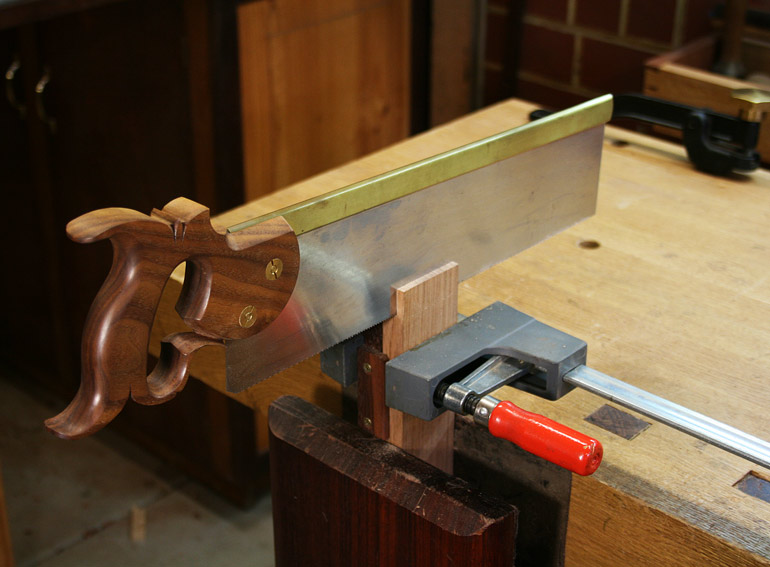I find inches useful for larger units and mm for smaller (avoids fractions). You should see the lingerie chest I am designing at present - it has a right Royal mix of measurements!

Derek
Erm - 36, 24, 36 by any chance?

Whilst I'm typing, may I offer a thought or two on sawing the perfect tenon?
The way I was taught at school about (cough) years ago was to set the job in the vice at about a 45 degree slant, then set the toothline of the saw on the mark on the corner nearest you, holding it's lateral position by bearing the sawblade against the ball of your thumb. Saw the vertical, and part way across the end, on both cheeks of the tenon. Then turn the job round in the vice, and do the same on the othr side. Then bring the job vertical, and finish the triangle of uncut wood. Then out of the vice onto a bench hook, and saw the shoulders.
This method has one great positive, and a couple of negatives. The positive is that at all times, you only saw to lines you can see. The negatives are that you have to start the saw on a corner, and that can lead to a certain amount of jumping about and uncertainty about exactly where the kerf starts at exactly the place you want absolute certainty about where you're sawing. The other slight negative is that because you're sawing by hand only, there's a little scope for things to wander either way, leaving a rather full tenon needing trimming on the cheek face, or an undercut cheek and thus a slack joint.
The first negative can be addressed two ways. The first is to start with the job nearer vertical in the vice, and the toothline of the saw laid gently on the end, allowing you to 'glide' the saw into a kerf - rather like starting the cut when sawing dovetails. Then saw down the vertical to the shoulder line, but only on the line you can see - at the far side of the tenon, lift the toe end of the saw a bit so that you don't cut the line you can't see. Then turn the job round in the vice as before, and ditto repeato - you can now see the line to cut it! Finish the triangle in the middle as before, then saw the shoulders. The second way is to take a bench chisel, and make a small notch at the corner, vertical cut right on the marked line, and a sloping cut in the cheek waste coming in to meet it - you can now start the saw with a couple of teeth engaged, so getting a smoother and more positive start to the cut.
The second negative can only really be addressed with practice - just like dovetailing. Cut a few, and get to know your saw. There's a dovetailing skill-builder strategy that advocates cutting a dovetail a day for a month, keeping the attempts and looking to get a bit better each day. The same idea could well be applied to that other fundamental joint of traditional woodworking - the mortice and tenon. Practice does indeed make perfect!
Please don't read this as an anti-jig rant - it most emphatically is not. Anybody who just can't get good results by hand and eye alone has the sure-fire fallback that a suitable jig may well be their saviour; and, let's face it, bench hooks and shooting boards are jigs!. However, the fastest results will usually be the 'mark out, cut by hand and eye' approach used by the skilled men of the past, and taking the time to develop the skill will be repayed many times over later.
I once read a forum question (can't remember which forum, now) about the best way to trim tenons for a good fit. One hoary old-timer replied that he didn't know, because he always aimed to fit the joint straight from the saw. It's by far the quickest way, but like any skill, it does need a bit of practice!


































